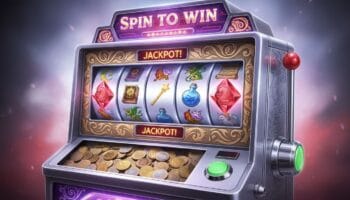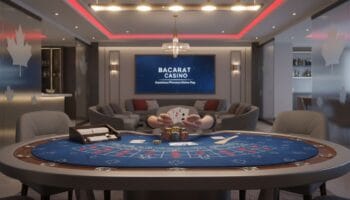Blackjack Insurance: All You Need to Know

Blackjack is a game of strategy, skill, and a bit of luck, captivating players at online casinos across Canada. As you navigate the virtual felt, you'll encounter various betting options designed to enhance the experience or, in some cases, mitigate potential losses. One such option that often sparks debate among players is ‘Insurance'. This side bet appears when the dealer's up-card is an Ace, offering a seemingly tempting way to protect your main wager against a dealer's natural Blackjack.
But what exactly is Blackjack Insurance, how does it work, and more importantly, is it a smart move for Canadian players? While it promises a payout if the dealer indeed has a 21, understanding the underlying probabilities is crucial before you commit your hard-earned Canadian dollars. Let's delve into the mechanics of this intriguing side bet and determine if it truly offers a valuable safety net or is simply a distraction from optimal play.
Understanding How Blackjack Insurance Works
The opportunity to place an Insurance bet arises when the dealer's visible card is an Ace. At this point, before any further action on the main hands, players are offered the chance to make an additional wager, typically half the amount of their initial bet. This bet is placed on the premise that the dealer's hidden card is a 10-value card (10, Jack, Queen, King), completing a natural Blackjack.
If you take the Insurance bet and the dealer reveals a 10-value card for a Blackjack, your Insurance bet pays out at 2 to 1. While your main bet would likely be lost (unless you also have a Blackjack, resulting in a push), the Insurance payout is designed to offset that loss. For instance, if you bet $100 CAD on your main hand and $50 CAD on Insurance, and the dealer gets Blackjack, you lose your $100 main bet but win $100 from the Insurance ($50 x 2), effectively breaking even on the round. This scenario is often seen as a “consolation prize” when your primary wager would otherwise be lost.
However, if the dealer does not have a 10-value card under their Ace, the Insurance bet is immediately lost, and the game continues as normal with your main hand. The dealer will then proceed to check their down-card for Blackjack, a process often referred to as a ‘peek', which helps players avoid further losses if the dealer does have a natural 21.
Exploring Blackjack Insurance Outcomes
To illustrate the various outcomes of taking an Insurance bet, let's consider a scenario with an initial main stake of $100 CAD and an Insurance wager of $50 CAD. Here are the six possible results:
| Scenario | Outcome with $100 Main Bet & $50 Insurance |
| Dealer has no Blackjack, Player has no Blackjack, Dealer wins the hand. | You lose both your initial $100 CAD stake and the $50 CAD insurance bet. Total Loss: $150 CAD |
| Dealer has no Blackjack, Player has no Blackjack, Player wins the hand. | You win $100 CAD on your main bet but lose the $50 CAD insurance bet. Total Gain: $50 CAD |
| Dealer has no Blackjack, Player has no Blackjack, the hand is a push. | Your initial $100 CAD bet is returned, but you lose the $50 CAD insurance bet. Total Loss: $50 CAD |
| Both Dealer and Player have Blackjack. | Your initial $100 CAD bet is a push (returned), and you win $100 CAD on the insurance bet ($50 x 2). Total Gain: $100 CAD |
| Player has Blackjack, Dealer does not. | You win $150 CAD on your main bet (3:2 payout for Blackjack) but lose the $50 CAD insurance bet. Total Gain: $100 CAD |
| Dealer has Blackjack, Player does not. | You lose your $100 CAD main bet but win $100 CAD on the insurance bet ($50 x 2). Net Result: $0 CAD (Break-even) |
Is Blackjack Insurance a Smart Bet for Canadian Players?
While the idea of breaking even when the dealer hits Blackjack might sound appealing, most casino experts and seasoned players advise against taking Insurance. The reason lies in the probabilities. In a standard deck of 52 cards, there are 16 cards with a value of 10 (10s, Jacks, Queens, Kings). When the dealer shows an Ace, the probability of their down-card being one of these 10-value cards is approximately 30.7% (16 out of the remaining 51 cards, assuming you don't have any 10s in your hand). This means there's roughly a 69.3% chance that the dealer does *not* have Blackjack.
Considering the 2 to 1 payout, for Insurance to be a profitable long-term bet, the dealer would need to have a Blackjack more often than the odds suggest. Since the odds are against the dealer having Blackjack (roughly 2.25:1 against), taking Insurance consistently means you'll lose this side bet more often than you win it, contributing to a higher house edge over time.
For the average player at an online casino in Canada, where card counting is virtually impossible due to automatic shufflers and frequent deck changes, Insurance is generally considered a poor bet. It increases the house edge and will deplete your bankroll faster in the long run. The only scenario where Insurance might be mathematically advantageous is for a skilled card counter who knows there's an unusually high concentration of 10-value cards remaining in the shoe. However, this advanced strategy is not applicable to most online Blackjack games.
Therefore, unless you possess exceptional card-counting abilities and are playing in a specific live casino environment that allows for it, it's generally recommended to decline the Insurance bet and stick to basic Blackjack strategy. Focus on making optimal decisions for your main hand to maximize your chances of success.
Most Recent News
Get the latest information







